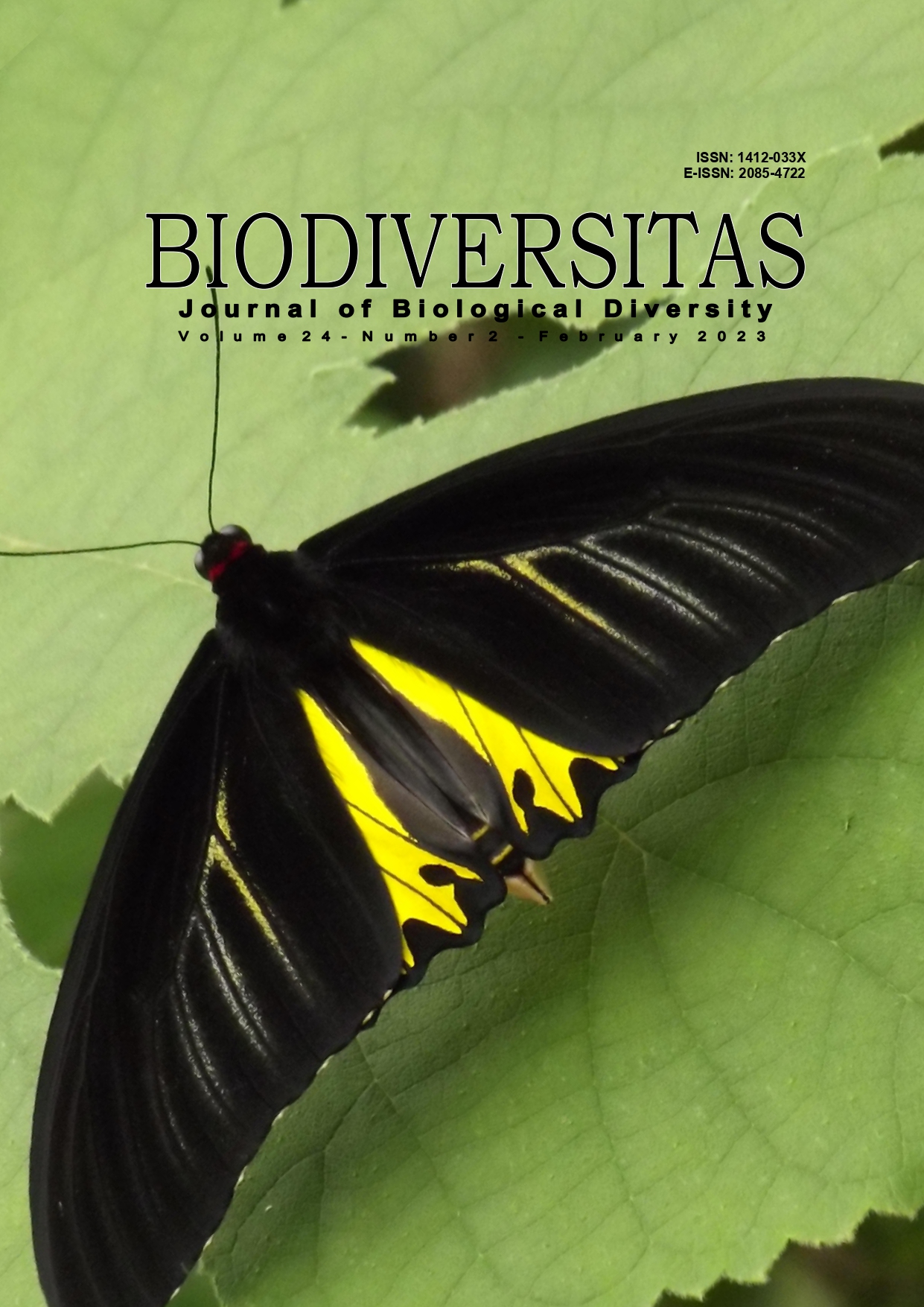Short Communication: Tabanid and muscoid hematophagous flies as potential vectors of Surra Disease in Yogyakarta, Indonesia
##plugins.themes.bootstrap3.article.main##
Abstract
Abstract. Qudsiyati N, Nurcahyo RW, Priyowidodo D, Indarjulianto S. 2023. Short Communication: Tabanid and muscoid hematophagous flies as potentialvectors of Surra Disease in Yogyakarta, Indonesia. Biodiversitas 24: 655-660. As a tropical country, Indonesia provides disease vectors and various kinds of parasitic diseases, such as surra disease caused by Trypanosoma evansi, which is transmitted by blood-sucking insects (flies), with a suitable environment. The disease is responsible for economic losses due to the decrease in beef production, and it can also be a potential zoonosis threatening human health. Disease prevention with vaccines is still unavailable. Therefore, treatment and prevention are carried out to eradicate flies with insecticides that can be hazardous to both humans and the environment. The present study aims at identifying the species and the phenology of potential surra fly vectors based on habitat differences. It was conducted from April to June 2022 in the Andini Mulyo farmer group, lowland Bantul and Maju Jaya farmer group, highland Kulon Progo, Daerah Istimewa Yogyakarta (DIY). The flies were caught using the NZi trap placed randomly or adjacent to Trypanosoma-positive cattle pens. The results showed that there were eight species of flies found in the Maju Jaya group, namely Tabanus megalops, T. rubidus, Tabanus sp., Stomoxys indica, S. calcitrans, S. sitiens, Haematobia irritans, and Musca domestica. Of them, except Tabanus megalops and Tabanus sp. were also recorded in Andini Mulyo group. The dominant vegetation found in Andini Mulyo and Tani Maju, respectively, are rice plants and wild plants, so the abundance of flies and the species richness of flies had a positive correlation with the Tani Maju group’s vegetation. The potential flies as surra disease vectors in the area found in surra disease cases were biting flies such as T. megalops, T. rubidus, Tabanus sp., S. indica, S. calcitrans, S. sitiens, Haematobia irritans. In addition, the hematogenous flies in Bantul and Kulon Progo could potentially cause the wider spread of surra disease and the decrease cow weight.
##plugins.themes.bootstrap3.article.details##
Most read articles by the same author(s)
- JUNI CLAUDIA DAMI, LUH PUTU EKA DAMAYANTI, SOEDARMANTO INDARJULIANTO, DWI PRIYOWIDODO, Ancylostomiasis in cats in Yogyakarta, Indonesia, and its causative genetic relations , Biodiversitas Journal of Biological Diversity: Vol. 24 No. 5 (2023)
- RADEN WISNU NURCAHYO, FITRINE EKAWASTI, LINTANG WINANTYA FIRDAUSY, VIKA ICHSANIA NINDITYA, MUKH FAJAR NASRULLOH, DYAH AYU KURNIAWATI, FATHUR ROHMAN HARYADI, JOKO PRASTOWO, DWI PRIYOWIDODO, Identification of bovine Eimeria species pathogenic using PCR ITS-1 in Indonesia , Biodiversitas Journal of Biological Diversity: Vol. 24 No. 8 (2023)
- DWI PRIYOWIDODO, APRIL HARI WARDHANA, DYAH HARYUNINGTYAS SAWITRI, JOKO PRASTOWO, WISNU NURCAHYO, AAN AWALUDIN, YUDHI RATNA NUGRAHENI, Detection of Plasmodium in small ruminants in Yogyakarta, Indonesia, using a nested PCR assay , Biodiversitas Journal of Biological Diversity: Vol. 24 No. 12 (2023)
- NILA QUDSIYATI, RADEN WISNU NURCAHYO, DWI PRIYOWIDODO, SOEDARMANTO INDARJULIANTO, Molecular detection and hematological profile of Trypanosoma evansi in livestock , Biodiversitas Journal of Biological Diversity: Vol. 25 No. 9 (2024)


 https://orcid.org/0000-0002-4305-2439
https://orcid.org/0000-0002-4305-2439